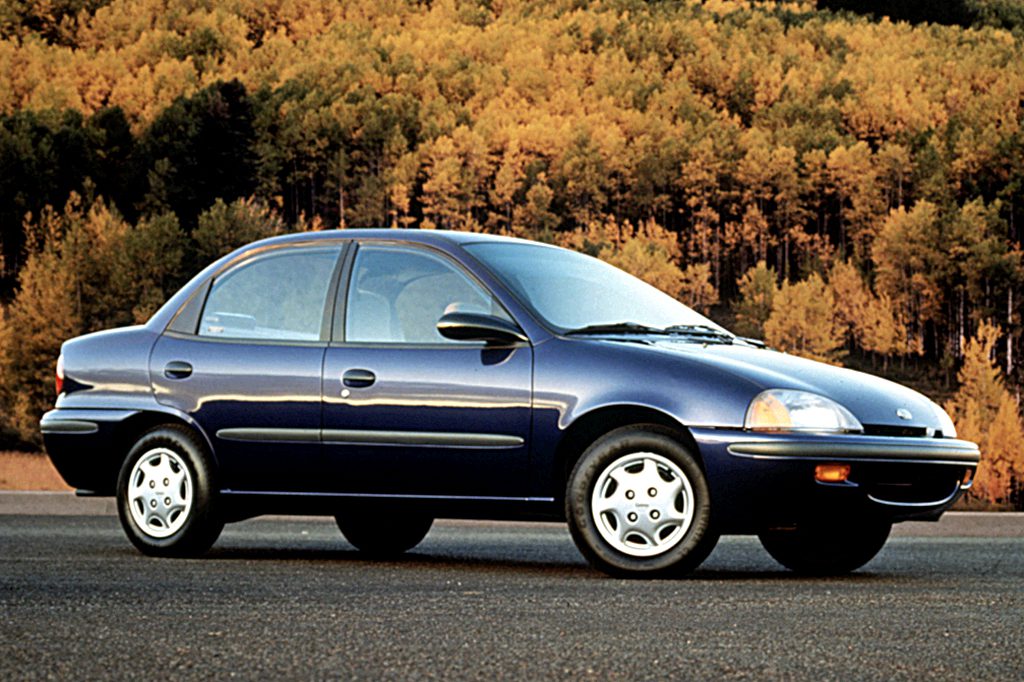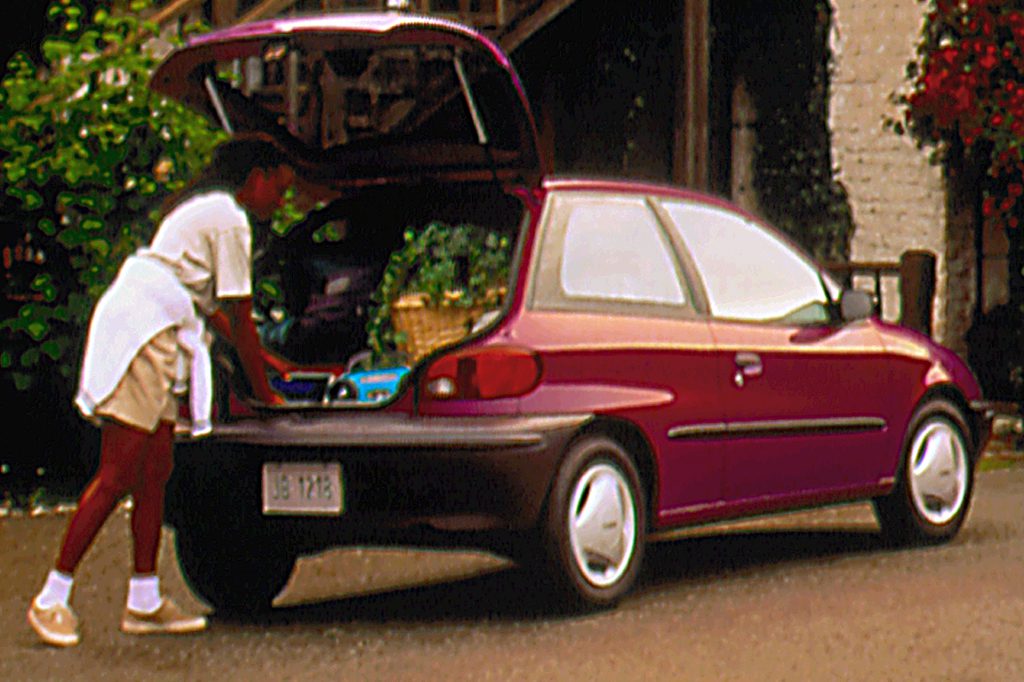| Compact car; Built in Canada |
|
|
| Good condition price range: $1,000 – $2,200* |

1995 Geo Metro LSi 2-door hatchback

1995 Geo Metro 4-door sedan

1996 Geo Metro 2-door hatchback

1997 Geo Metro 2-door hatchback

1997 Geo Metro LSi 4-door sedan
| Pros: |
|
| Cons: |
|
All told, we rank Metro ahead of Ford’s Aspire in the minicar field. It’s worth a look if price is your top priority.
Overview
Redesigned for 1995, the Metro got a new body style, standard dual airbags, and an optional 4-cylinder engine. The front-drive Metro was built from the same design as the Suzuki Swift. A 2-door hatchback body style returned, now on a longer (93.1-inch) wheelbase. The prior 4-door hatchback was replaced by a 4-door notchback that’s more than a foot longer. Both body styles came in base and upscale LSi trim. A 1.0-liter 3-cylinder engine returned in the 2-door. A 70-horsepower 1.3-liter 4-cylinder was standard in the sedan and optional in the LSi hatchback. A 5-speed manual gearbox was standard with both engines; 3-speed automatic optional only with the 4 cylinder. Antilock brakes were optional on all Metros.
Yearly Updates
| 1996 Metro Even the entry-level model could get the larger Metro engine in 1996. Otherwise, only detail revisions were evident. |
| 1997 Metro Metro’s 4-cylinder engine now was standard in the LSi hatchback and 4-door, but the base 4-door model was dropped. A new option package for the LSi sedan added a split folding rear seat. |
| 1998 Metro Metro moved from now-defunct Geo to Chevrolet. It also got a more-powerful 4-cylinder engine, the requisite Chevy bow tie, and new headlamps. |
| 1999 Metro Metro saw no change for ’99. |
| 2000 Metro No change was evident, except for a remote cargo-lid release added to the uplevel LSi model. |
| 2001 Metro Metro was only sold in rental outlets for 2001. Some of these vehicles are now on the market as used vehicles. |
